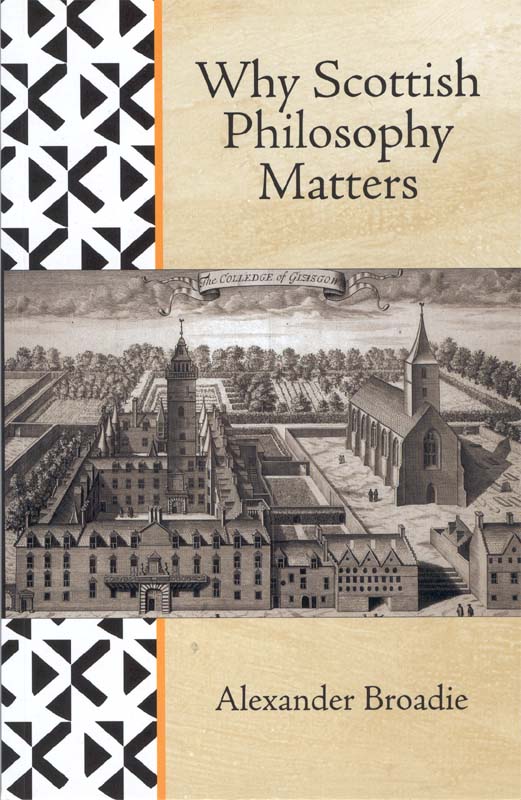|
A SYNOPSIS OF DR. DAVID CALDWELL'S SPEECH TO THE
CALEDONIAN CLUB-ST. ANDREW'S SOCIETY OF NEW YORK MEETING AND TO THE HARBOR DEFENSE MUSEUM AT FORT HAMILTON IN
BROOKLYN

Although the Scots generally have a high regard for their martial tradition, and take pride in the
achievements of Scottish forces in wars throughout the world from the eighteenth century to the present day, they
tend to assume that the feats of earlier times are less significant or memorable. The notable exceptions to this
are the victory of William Wallace over the English at Stirling Bridge in 1297 and the defeat of Edward II of
England by Robert Bruce at Bannockburn in 1314. It is clear that if warfare between Scotland and England is seen as
a series of battles, then the English won by a long margin. There are, however, more meaningful ways at looking at
the course of warfare between these two countries.
In the twelfth century Scottish kings, particularly David I, transformed their kingdom from an
isolated Celtic realm on the fringes of Europe to a country which was determinedly part of Europe. European
institutions and fashions were adopted under the influence of Anglo-Norman and Flemish lords granted Scottish
estates by the king. They were responsible for providing a new type of military service, heavily armoured men
mounted on horseback. These knights were expensive to equip and train, and Scotland never produced enough of them
to be an effective force. When the Scottish horse were easily seen off by a superior English invasion force at
Dunbar in 1296 it was obvious to some that there was no future for the Scots in pursuing this military
strategy.
Fortunately for Scotland, in the wars that followed, she produced leaders who developed new tactics
to suit their country's needs and resources. Amongst them was a general and statesman of world-class status, Robert
Bruce, to whom most of the credit must go for rescuing Scotland from English domination. Bruce proved adept at
guerrilla warfare and in taking enemy strongholds. He showed that it was possible to create an effective fighting
force of Scots on foot, armed with spears and other long-shafted weapons, able even to withstand cavalry charges
from the English. He also demonstrated, as many Scottish leaders before him, how effective fast moving raids into
enemy territory could be, the men lightly armed and mounted on horses, destroying and burning as much as they
could. They involved the Scots in little expense, required few resources in equipment, and could have a devastating
effect on enemy morale.
Conversely, when the English invaded Scotland a `burnt earth' strategy was adopted, removing or
destroying everything in advance of the enemy. The Scots had more to gain in booty from England than the English
from Scotland. Bruce himself did not shirk battle on numerous occasions, but these tactics were normally most
successful when pitched battles were avoided.
Any serious attempt by the English to annex Scotland ceased by the 1340s but this did not mean a
total cessation of hostilities between the two nations. The Scots continued to rely heavily on their raiding and
burnt earth tactics but were to be distracted by concepts of chivalry and the new technology of guns.
A belief in chivalric values meant it was dishonourable not to stand and fight, an idea that ran
counter to the successful pursuance of a Scottish foreign policy for dealing with England. England could always
expect to win battles owing to its far greater resources and wealth, and its reliance on professional soldiers. In
1388, however, a small Scottish raiding party under the leadership of the Earl of Douglas won a famous victory over
a superior English force led by Henry Percy, nicknamed `Hotspur', at Otterburn. Douglas had captured Percy's pennon
and challenged him to come and rescue it. The English army caught up with the Scots as it was getting dark. The
battle developed into a series of man to man struggles in which the Scots came off best, killing many of their foes
and capturing their leaders. The only significant Scottish casuality was the Earl of Douglas, allegedly fulfilling
a dream he had had about a dead man winning a battle. This victory gave the Scots European renown, but they were to
be misled by chivalrous notions into unnecessary battle on more than one occasion in the future, with disastrous
results.
Scottish kings eagerly adopted the new technology of guns as soon as they could get their hands on
them, certainly from the 1380s. By the mid fifteenth century they had guns which could effectively reduce castles
to submission and by the 1470s they were casting pieces of bronze artillery to add to those they had to import from
abroad. Making or buying guns, powder and shot, and paying all the necessary specialists involved in their
manufacture and operation was a very expensive business. In terms of warfare with England guns suggested the
pursuit of a totally different strategy, the reduction of enemy border strongholds. This King James IV set out to
do in three major invasions of England in 1496, 1497 and 1513.
To get the Scottish siege train from its base in Edinburgh Castle to the English Border took about
a week. The Scots then only had a few days to bombard an enemy castle before they had to withdraw on the approach
of an English army. In 1513, after successfully reducing the major fortress of Norham Castle, things went
disastrously wrong after James IV accepted the enemy commander's challenge to stand and fight, loosing his own life
and those of a quarter of his army at the Battle of Flodden.
By the mid sixteenth century when warfare had become more professionalised and there was increasing reliance on
expensive equipment, the Scots were struggling to keep up. The country was fought over by two of the major powers
of the time, France and England, with the Scots reduced to a subsidiary role in their own land. TheEnglish dug in
with `state of the art' earthwork fortifications, only to be evicted by the French in 1550. Things had turned full
circle by 1560 when an English expeditionary force saw off the French from their fort in Leith . Both foreign
powers had expended vast resources on Scotland and neither ended up with the compliant ally or colony they had
sought.
Scotland had been seen to fail militarily, and in the late sixteenth century had to rely on more than one occasion
on English military support to sort out internal problems. But the Scots had not lost their appetite or ability to
cause devastation through raiding in the North of England. The activities of Clan Donald and other Scottish
clansmen in Ireland were a major problem for the English administration there. Many key people in England realised
that after hundreds of years of warfare and vast expenditure they had failed to provide security for their northern
border. This was a major factor in deciding them to have King James I of Scotland as King of England as well from
1603. Surely this demonstrates the ultimate success of the Scottish military strategy?
Further Reading
D H Caldwell, Scotland's Wars and Warriors Winning Against the Odds (Edinburgh: The Stationery Office,1998)
ISBN 0 11 495786 X
BOOK REVIEW

|
Why Scottish Philosophy Matters
by Alexander Broadie
Published by The Saltire Society; 9 Fountain Close, High Street; Edinburgh EH1 1TF Scotland
196 pages, published in 2000
6.99 pounds (£)
|
This small soft cover book is a fascinating look at Scottish philosophy, an area little known in general and
perhaps even less so in the United States. Yet the impact of the Scots on Western society is generally thought of
in terms of who had (or did not have) Scottish ancestry. But as we all know, a culture is not carried in the genes
and each of us carries genes from many places. It is in fact, the cultural patterns of thought and behavior which
are instilled into each of us as we grow up that give us our "cultural heritage". While we all know that Edvard
Grieg, is of Scottish descent it would certainly be hard to think of him as "culturally" Scottish. He certainly
would have rankled at the thought. (He had been told that his piano concerto was "too Norwegian" and he exclaimed
that the next one would be even more so!)
Hence it is particularly interesting to note that this book places the stress on the thought patterns which make
Scottish philosophy, Scottish. The book starts by looking at philosophers like John Duna Scotus (not exactly a
household name even to many Scottish Americans), and John Mair. Broadie discuss in some detail David Hume, perhaps
the most well known of the Scottish philosophers and shows how he was in fact, writing against the prevailing
theories in Scottish philosophy.
The book is well written and the arguments can be followed with no difficulty by people who do not have serious
training in philosophy. It is a pleasure to see that the Saltire Society has published this book (and several
others like it) which stress the importance and uniqueness of Scotland and Scottish culture.
PAGE TWO TABLE OF CONTENTS
PAGE FOUR
|